Bee Damage
Every year I get calls to repair carpenter bee damage. These bees don’t eat wood but instead bore tunnels in fascia boards, soffit and window and door jambs. They use these tunnels as chambers to raise their young and hibernate in the winter.
A single bee can’t do much damage but the young come back every year and bore more tunnels and enlarge the existing ones. Over time extensive damage results if no preventative action is taken.
Occasionally wood peckers will detect the bees in fascia boards or siding and riddle the surface of the boards to get at the bees and their larva.
The best measure you can take to reduce bee damage to your home is to keep it well painted as bees prefer natural wood. Sometimes however they will bore holes anyway. If you see bees persistently hovering around your home they are probably drilling holes somewhere. Look for smooth holes about ½ inch in diameter on the under side of your fascia boards or soffit.
Other distinct signs of activity are small piles of “sawdust” directly under their holes and defecation stains on nearby boards.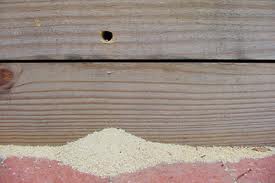
If you find holes in your home you should act promptly to limit the damage. Taking care not to get stung (the females have stingers) quickly insert a twig or ball of paper into the hole. Once the hole is plugged smooth over it with caulk or exterior wood putty and then paint the entire area. Repeat this process on all existing and subsequent holes to keep bee damage to a minimum.
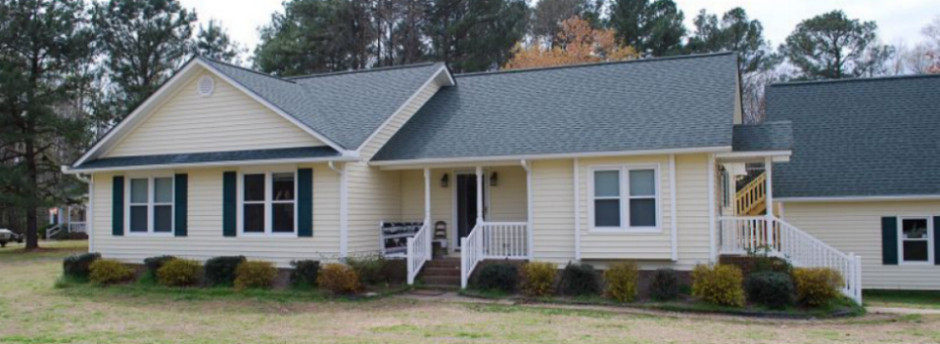
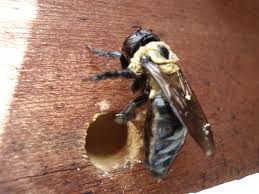
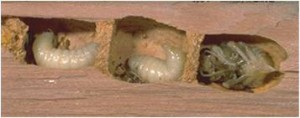
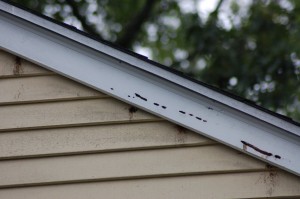
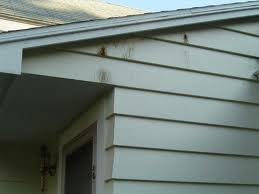
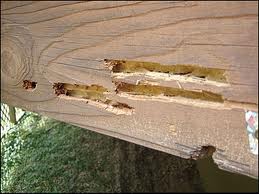


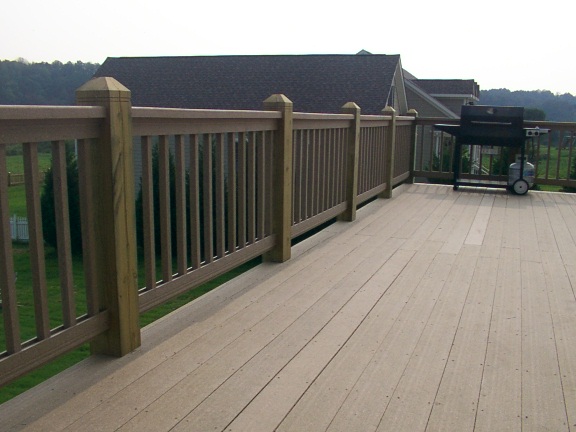

Tony,
I am in Connecticut and have a carpenter bee problem similar to the one shown in the picture with bee defecation. The building has vinyl siding and aluminum covering the trim under the edge of the roof. Apparently the bees get at the wood behind the aluminum trim via the gap between the vinyl siding and the aluminum.
What can be done to stop the problem? It’s not practical to paint he covered wood. I’ve had someone spray some chemical the past 2 years but it the bees are back again this
year. I’m thinking of filling the gaps with something like fiber glass wool, copper or stainless steel wool or possibly foam insulation.
Do you have any proven fixes to suggest?
Tanks
Dennis
Mr. Buono,
Thank you for your question about carpenter bee damage behind your fascia trim.
It is unfortunate that this is an issue on many homes with vinyl siding. There are relatively simple solutions to prevent this from becoming an issue, but unfortunately most installers are unaware of, or not interested in, the minimal extra materials and work required to prevent this problem.
The most effective solution I know of to stop carpenter bees from damaging the wood in the areas you described is to fill the voids with enough caulking to seal off the openings. It is tedious to seal every opening but it only has to be done one time. I reccomend a clear latex caulk such as dap, available at lowes. It is a milky white when applied but dries crystal clear in a few days. This method immediately stops the bees, remains effective for the life of the siding, doesn’t loosen or fall out of place, wont hold moisture, and is economical.
I hope I have been of some help in this matter and would appreciate any feedback as to the solution you choose, and it’s effectiveness.
Best regards,
Tony wood
WHMS
Pingback: 13 Carpenter Bee Mistakes That Attract More — Plus 6 Solutions That Work - Complete Gardening